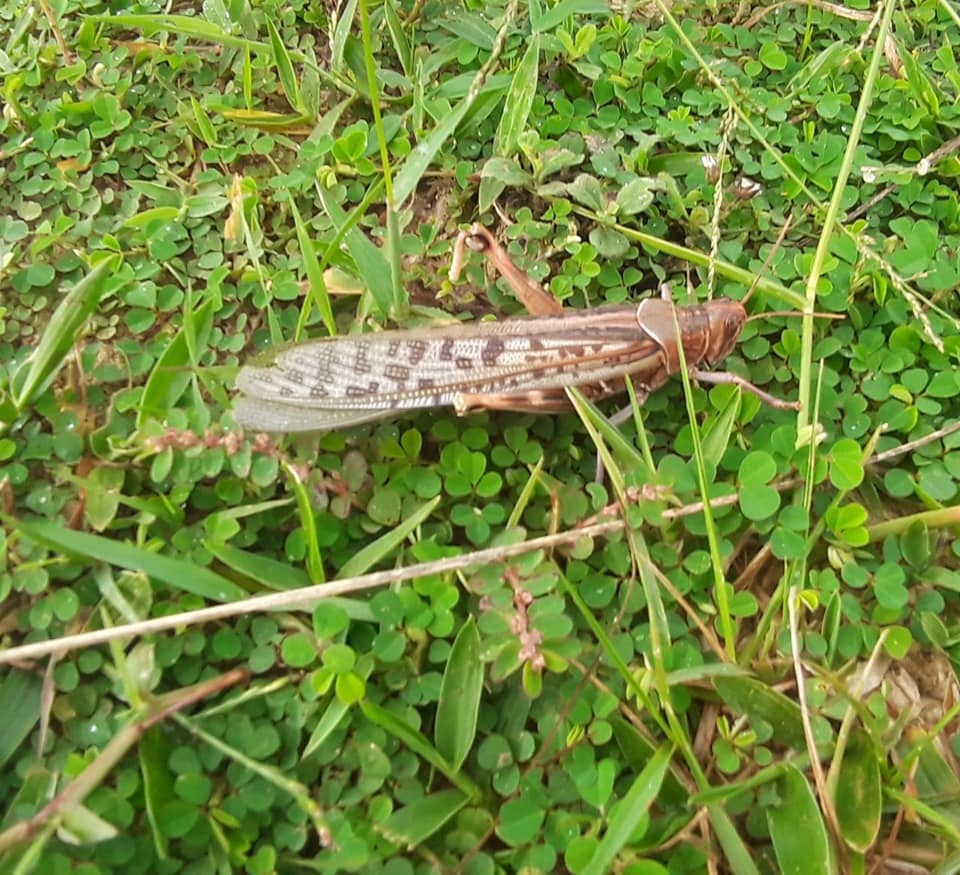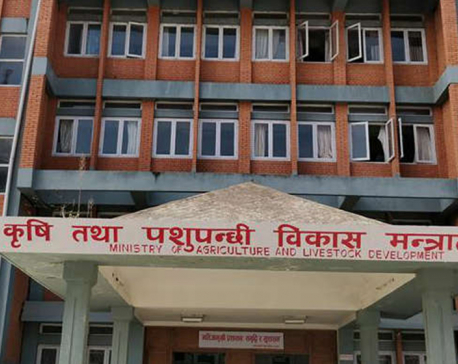
OR
Only 200,000 locusts intact with the swarm in Nepal
Published On: July 5, 2020 06:20 AM NPT By: Republica | @RepublicaNepal

KATHMANDU, July 4: Though nearly eight million locusts had entered Nepal, the number that is still intact with the swarm has dropped down to 200,000, according to the Locust Information Center at Plant Quarantine and Pesticide Management Center (PQPMC).
“There were about 8 million locusts when they entered Nepal in the beginning but as their swarms got scattered, it had gone down to 3.5 million within four days of their entry,” said Ram Krishna Subedi, coordinator at the Locust Information Center. “Now, there are barely 200,000 locusts intact with the swarm.” Locusts that have been scattered while migrating are said to cause little damage to the crops in Nepal.
Meanwhile, a total of 1,118 hectares of land has been affected by the locust swarms in Nepal. Crops in districts like Makwanpur, Dang, Pyuthan, Arghakhanchi and Palpa have been affected by locusts. According to him, it is unsure if they died but their number has definitely gone down. “They are unlikely to cause any further significant damage as they become active when they are in groups but their nature is totally different when they are separated from the swarm,” he added.
The migratory locusts had affected 580 hectares of land in Dang, 283 hectares in Pyuthan, 105 hectares in Makwanpur and 100 hectares in Arghakhanchi. They had damaged crops planted in 50 hectares of land in Palpa. The center has mentioned that despite locusts’ presence in 52 districts, no report of any significant damage has been received because of the small size of the swarms.
The inactivity of the locusts has been attributed to the current weather of Nepal. Rain hampers their mobility and as they seek sunlight before heading toward the crops to damage them, the cloudy weather has maintained their inactivity. As the direction of the wind is toward the west, another swarm might not enter Nepal in this situation.
The PQPMC, however, has instructed people to remain on alert and follow the instructions to get rid of the swarms without using any harmful ways. “We have been coordinating with all possible stakeholders to contain the spread of the locust swarms in Nepal,” Subedi told Republica Online.
According to the Plant Quarantine and Pesticide Management Center (PQPMC), the nearest locust swarms today are located at Tikamgadh of Madhya Pradesh, at about 609 kilometers from Bhairahawa. “There are two swarms, one is n immature swarm covering 140 hectares and another is 90 hectares with a mix of mature and immature adults,” it stated, adding, “With the predicted wind movement in Nepal from east to west, it is not likely that the locust swarms will enter Nepal.”
A swarm of locusts had entered Nepal on June 27. Locusts had been ravaging crops around the fields of India. Locusts are known for ravaging maize fields across the countries that have been affected by their attacks.
You May Like This

Govt bans import of roses on the eve of Valentine's Day
KATHMANDU, Feb 10: On the eve of Valentine's Day, the government has decided to ban the import of fresh roses... Read More...

An encouraging 92 percent of paddy acreage planted by mid monsoon season
KATHMANDU, July 23: Paddy transplantation has been completed on 91.68 percent of the country's rice fields as of Wednesday, thanks... Read More...

Little damage to crops by locusts in Nepal: Ministry
KATHMANDU, June 29: The government has said the swarms of locusts that entered Nepal on Saturday have not caused any... Read More...









Just In
- Govt urges ISPs to settle outstanding tax liabilities amid internet service disruptions
- Cases of banking fraud up in Nawalparasi
- IGP Kunwar holds meeting with Indonesian National Police Chief Murti
- Nepal faces severe disruptions in internet service after ISPs fail to pay the Indian vendor
- Innovation Fund will be set up for IT sector expansion: PM
- NEPSE loses 7.31 points, daily turnover slides down to Rs 4.13 billion
- President Paudel summons budget session on May 10
- Over 100,000 tourists visit Nepal monthly on average










Leave A Comment